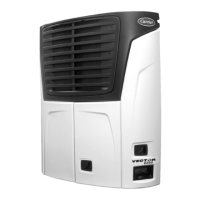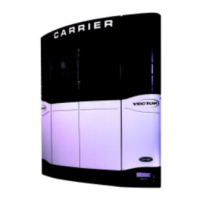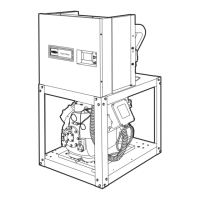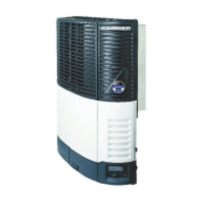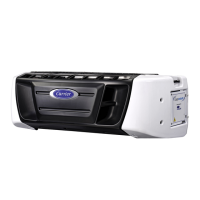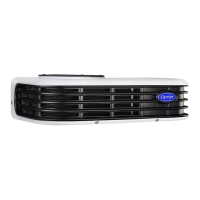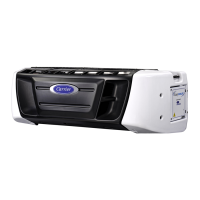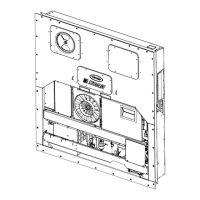62-61753-21
27 HIGH SUCTION PRESSURE
TRIGGER ON: The compressor is running and the suction pressure has been greater than
6.7 bar (98 psig) for more than 10 minutes.
UNIT CONTROL: Engine operation: Engine operation: alarm only or (if configured for shut
down) engine and unit shutdown and alarm.
Standby operation: alarm only or (if configured for shutdown) refrigeration
system shutdown and alarm with PSCON still energized.
RESET CONDITION: Auto reset when suction pressure is less than 75 psig (5.1 bar) for 5 minutes
and configured for Alarm Only in standby operation or Auto Reset after 30 minutes if in engine opera-
tion if configured as a Shutdown Alarm or, alarm may be manually reset via keypad or by turning the
unit off, then back on again.
NOTE: Follow the steps below until a problem is found. Once a repair or correction has been made, the active
alarm should clear itself (refer to reset condition above). Operate the unit through the appropriate modes to see if
any active alarm occurs. Continue with the steps below as necessary.
a. Install Manifold Test Set and check
and compare compressor dis-
charge & suction pressures with
those shown on the microproces-
sor.
Suction & Discharge Pressures must have the same
reading on gauges & on microprocessor display.
Pressures must be in the normal range for ambient &
refrigerated compartment temperature conditions.
NOTE: Microprocessor suction (CSP) and evapora-
tor (EVOP) pressure readings have a maximum
value of 7.5 bar (100 psig). The actual suction pres-
sure must be lower in order to perform this test.
Check For Refrigerant Overcharge
a. Check refrigerant level in the re-
ceiver.
Generally, level should be between upper & lower sight
glasses with a refrigerated compartment temperature
of 1.0°C (35°F) or lower. refer to Section 8.5.4
a. Inspect transducer & connector
pins & terminals. (See wiring
schematic Section 10.)
No physical damage to sensor.
No damaged or corroded pins in plug.
b. Energize sensor circuit.
c. Check for voltage at the transducer
plug between pins A (+) and B
(ground).
Refer to Note 2 Page 7-2.
Voltage should be approximately 12 VDC.
If OK, go to step e. If not, continue with this step.
d. Reconnect the transducer plug.
Check for voltage between 1MP-
29 and ground.
Voltage should be greater than 0.24 VDC and less
than 5 VDC.
a. Clear Active Alarm list, then run
Pretrip & check for any new
alarms.
Any active alarms must be corrected and cleared be-
fore proceeding.
Check Evaporator Expansion Valve (EVXV)
a. Check operation of valve.
a. Check compressor for excessive
vibration or noise
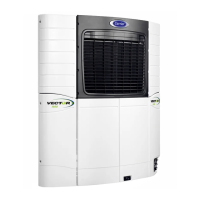
